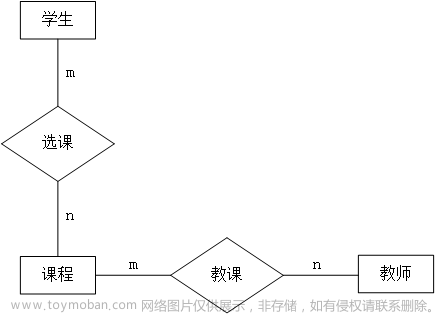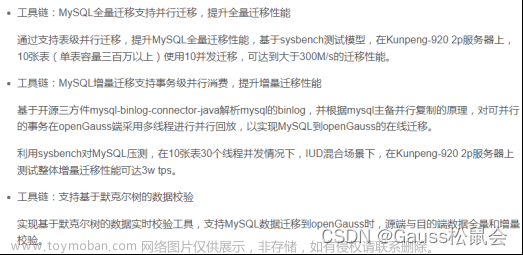sys schema介绍
说到诊断MySQL的性能问题,都知道从performance_schema去获取想要的数据,但是其复杂程度让使用人员使用起来很不方便。在MySQL5.7中,performance_schema已经有80多张表,每张表都是各种统计信息的罗列。另外这些表和information_schema中的部分表也有关联,导致使用人员使用起来非常不便。
在MySQL5.7中新增了sys Schema。MySQL sys Schema是一个由一系列对象(视图、存储过程、存储方法、表和触发器)组成的database schema,它本身不采集和存储什么信息,而是将performance_schema和information_schema中的数据以更容易理解的方式总结出来归纳为“视图”。DBA和开发人员可以通过sys Schema方便、快速地读取Performance Schema收集的数据。接下来看一下sys Schema的视图中的数据是从哪里来的,如图12.1所示,举例说明如下。
通过视图定义可以看出,数据主要来源于information_schema中的COLUMNS和TABLES表。利用JOIN的方式连接查询,然后进行处理、过滤等,来展示实例中的自增量情况。sys Schema可用于典型的调优和诊断用例,这些对象包括如下三个。
- 将性能模式数据汇总到更易于理解的视图。
- 诸如性能模式配置和生成诊断报告等操作的存储过程。
- 用于查询性能模式配置并提供格式化服务的存储函数。
MySQL sys Schema默认包含在MySQL5.7中,并提供摘要视图以回答诸如下面所列的常见问题。
- 谁占了数据库服务的所有资源?
- 哪些主机对数据库服务器的访问量最大?
- 实例上的内存都去哪里了?
mysql> use sys;
Reading table information for completion of table and column names
You can turn off this feature to get a quicker startup with -A
Database changed
mysql> show create table schema_auto_increment_columns\G
*************************** 1. row ***************************
View: schema_auto_increment_columns
Create View: CREATE ALGORITHM=MERGE DEFINER=`mysql.sys`@`localhost` SQL SECURITY INVOKER VIEW `schema_auto_increment_columns` AS select `information_schema`.`COLUMNS`.`TABLE_SCHEMA` AS `table_schema`,`information_schema`.`COLUMNS`.`TABLE_NAME` AS `table_name`,`information_schema`.`COLUMNS`.`COLUMN_NAME` AS `column_name`,`information_schema`.`COLUMNS`.`DATA_TYPE` AS `data_type`,`information_schema`.`COLUMNS`.`COLUMN_TYPE` AS `column_type`,(locate('unsigned',`information_schema`.`COLUMNS`.`COLUMN_TYPE`) = 0) AS `is_signed`,(locate('unsigned',`information_schema`.`COLUMNS`.`COLUMN_TYPE`) > 0) AS `is_unsigned`,((case `information_schema`.`COLUMNS`.`DATA_TYPE` when 'tinyint' then 255 when 'smallint' then 65535 when 'mediumint' then 16777215 when 'int' then 4294967295 when 'bigint' then 18446744073709551615 end) >> if((locate('unsigned',`information_schema`.`COLUMNS`.`COLUMN_TYPE`) > 0),0,1)) AS `max_value`,`information_schema`.`TABLES`.`AUTO_INCREMENT` AS `auto_increment`,(`information_schema`.`TABLES`.`AUTO_INCREMENT` / ((case `information_schema`.`COLUMNS`.`DATA_TYPE` when 'tinyint' then 255 when 'smallint' then 65535 when 'mediumint' then 16777215 when 'int' then 4294967295 when 'bigint' then 18446744073709551615 end) >> if((locate('unsigned',`information_schema`.`COLUMNS`.`COLUMN_TYPE`) > 0),0,1))) AS `auto_increment_ratio` from (`INFORMATION_SCHEMA`.`COLUMNS` join `INFORMATION_SCHEMA`.`TABLES` on(((`information_schema`.`COLUMNS`.`TABLE_SCHEMA` = `information_schema`.`TABLES`.`TABLE_SCHEMA`) and (`information_schema`.`COLUMNS`.`TABLE_NAME` = `information_schema`.`TABLES`.`TABLE_NAME`)))) where ((`information_schema`.`COLUMNS`.`TABLE_SCHEMA` not in ('mysql','sys','INFORMATION_SCHEMA','performance_schema')) and (`information_schema`.`TABLES`.`TABLE_TYPE` = 'BASE TABLE') and (`information_schema`.`COLUMNS`.`EXTRA` = 'auto_increment')) order by (`information_schema`.`TABLES`.`AUTO_INCREMENT` / ((case `information_schema`.`COLUMNS`.`DATA_TYPE` when 'tinyint' then 255 when 'smallint' then 65535 when 'mediumint' then 16777215 when 'int' then 4294967295 when 'bigint' then 18446744073709551615 end) >> if((locate('unsigned',`information_schema`.`COLUMNS`.`COLUMN_TYPE`) > 0),0,1))) desc,((case `information_schema`.`COLUMNS`.`DATA_TYPE` when 'tinyint' then 255 when 'smallint' then 65535 when 'mediumint' then 16777215 when 'int' then 4294967295 when 'bigint' then 18446744073709551615 end) >> if((locate('unsigned',`information_schema`.`COLUMNS`.`COLUMN_TYPE`) > 0),0,1))
character_set_client: utf8
collation_connection: utf8_general_ci
1 row in set (0.00 sec)
sys Schema视图摘要
sys Schema中包含了很多以各种方式总结Performance Schema表的视图。这些视图大多数都是成对出现,使得每组视图中的一个成员具有与另一成员相同的名称,加上一个 x$ 前缀。例如,host_summary_by_file_io视图汇总按主机分组的文件I/O及延迟。没有 x$ 前缀的视图提供了更加友好且容易阅读的数据,x$ 前缀的视图提供了原始数据,更多用于需要对数据进行处理的其他工具。
视图按照展示信息可以分为如下几类。
- 主机相关信息:以host_summary开头的视图,主要汇总了IO延迟的信息,从主机、文件事件类型、语句类型等角度展示文件IO的信息。
- innodb相关信息:以innodb开头的视图,汇总了innodb buffer page信息和事务等待InnoDB锁信息。
- io使用情况:以io开头的视图,总结了io使用者的信息,包括等待I/O的情况、I/O使用量情况,从各个角度分组展示。
- 内存使用情况:以memory开头的视图,从主机、线程、用户、事件角度展示内存使用情况。
- 连接与会话信息:其中,processlist和session相关的视图,总结了会话相关信息。
- 表相关信息:以schema_table开头的视图,从全表扫描、InnoDB缓冲池等方面展示了表统计信息。
- 索引信息:其中包含index的视图,统计了索引使用情况,以及重复索引和未使用的索引情况。
- 语句相关信息:以statement开头的视图,统计的规范化后的语句使用情况,包括错误数、警告数、执行全表扫描的、使用临时表、执行排序等信息。
- 用户的相关信息:以user开头的视图,统计了用户使用的文件IO、执行的语句统计信息等。
- 等待事件相关信息:以wait开头的视图,从主机和事件角度展示等待类事件的延迟情况。
查看表的访问量
在一般的运维中,DBA维护了大量的数据库。每个业务上线某些SQL也许不会通知DBA,突然间某个实例的QPS上升,DBA如何查看问题并快速定位到底是哪个业务引起的QPS上升,或者说业务方上线一个业务,需要评估涉及的表访问量的增长情况,这时该怎么办? 在sys Schema中的schema_table_statistics视图,可以帮助我们定位到表的访问量情况。
mysql> SELECT table_schema, table_name, sum(io_read_requests+io_write_requests) FROM `schema_table_statistics`;
+--------------+------------------------+-----------------------------------------+
| table_schema | table_name | sum(io_read_requests+io_write_requests) |
+--------------+------------------------+-----------------------------------------+
| info_collect | google_detail_tbsget_0 | 110572 |
+--------------+------------------------+-----------------------------------------+
1 row in set (0.13 sec)
我们可以监控每张表访问量的变化情况,或者监控某个库的访问量变化等。如果某个库、某个表发生变化,DBA能够及时知道每个表的访问情况。
冗余索引与未使用的索引检查
线上使用数据库实例越来越多,每个表中都会创建索引,导致每个实例的索引非常多。一般都会有索引使用率很低或者是冗余索引的情况,这些索引是完全没有必要建立的。它们不仅消耗磁盘空间,而且还影响数据库的性能,DBA需要实时关注是否有该类索引的出现,出现时需要立即处理。那么时,sys Schema中的schema_redundant_indexes和schema_unused_indexes可以帮助我们快速查看索引情况。
tbs@localhost:[(none)]>select * from sys.schema_redundant_indexes \G
*************************** 1. row ***************************
table_schema: dbt3
table_name: a
redundant_index_name: inx_a
redundant_index_columns: a
redundant_index_non_unique: 1
dominant_index_name: PRIMARY
dominant_index_columns: a
dominant_index_non_unique: 0
subpart_exists: 0
sql_drop_index: ALTER TABLE `dbt3`.`a` DROP INDEX `inx_a`
*************************** 2. row ***************************
table_schema: dbt3
table_name: lineitem
redundant_index_name: i_l_orderkey
redundant_index_columns: l_orderkey
redundant_index_non_unique: 1
dominant_index_name: i_l_orderkey_quantity
dominant_index_columns: l_orderkey,l_quantity
dominant_index_non_unique: 1
subpart_exists: 0
sql_drop_index: ALTER TABLE `dbt3`.`lineitem` DROP INDEX `i_l_orderkey`
*************************** 3. row ***************************
table_schema: dbt3
table_name: lineitem
redundant_index_name: i_l_partkey
redundant_index_columns: l_partkey
redundant_index_non_unique: 1
dominant_index_name: i_l_suppkey_partkey
dominant_index_columns: l_partkey,l_suppkey
dominant_index_non_unique: 1
subpart_exists: 0
sql_drop_index: ALTER TABLE `dbt3`.`lineitem` DROP INDEX `i_l_partkey`
*************************** 4. row ***************************
table_schema: dbt3
table_name: lineitem
redundant_index_name: i_l_orderkey
redundant_index_columns: l_orderkey
redundant_index_non_unique: 1
dominant_index_name: PRIMARY
dominant_index_columns: l_orderkey,l_linenumber
dominant_index_non_unique: 0
subpart_exists: 0
sql_drop_index: ALTER TABLE `dbt3`.`lineitem` DROP INDEX `i_l_orderkey`
*************************** 5. row ***************************
table_schema: dbt3
table_name: orders
redundant_index_name: idx_cust_date_status_80
redundant_index_columns: o_custkey,o_orderDATE,o_orderstatus
redundant_index_non_unique: 1
dominant_index_name: idx_a_b_c
dominant_index_columns: o_custkey,o_orderDATE,o_orderstatus
dominant_index_non_unique: 1
subpart_exists: 0
sql_drop_index: ALTER TABLE `dbt3`.`orders` DROP INDEX `idx_cust_date_status_80`
*************************** 6. row ***************************
table_schema: dbt3
table_name: orders
redundant_index_name: i_o_custkey
redundant_index_columns: o_custkey
redundant_index_non_unique: 1
dominant_index_name: idx_a_b_c
dominant_index_columns: o_custkey,o_orderDATE,o_orderstatus
dominant_index_non_unique: 1
subpart_exists: 0
sql_drop_index: ALTER TABLE `dbt3`.`orders` DROP INDEX `i_o_custkey`
*************************** 7. row ***************************
table_schema: dbt3
table_name: orders
redundant_index_name: i_o_custkey
redundant_index_columns: o_custkey
redundant_index_non_unique: 1
dominant_index_name: idx_cust_date_status_80
dominant_index_columns: o_custkey,o_orderDATE,o_orderstatus
dominant_index_non_unique: 1
subpart_exists: 0
sql_drop_index: ALTER TABLE `dbt3`.`orders` DROP INDEX `i_o_custkey`
*************************** 8. row ***************************
table_schema: dbt3
table_name: orders
redundant_index_name: i_o_custkey
redundant_index_columns: o_custkey
redundant_index_non_unique: 1
dominant_index_name: inx_cust_date_status
dominant_index_columns: o_custkey,o_orderdate2,o_orderstatus
dominant_index_non_unique: 1
subpart_exists: 0
sql_drop_index: ALTER TABLE `dbt3`.`orders` DROP INDEX `i_o_custkey`
*************************** 9. row ***************************
table_schema: dbt3
table_name: partsupp
redundant_index_name: i_ps_partkey
redundant_index_columns: ps_partkey
redundant_index_non_unique: 1
dominant_index_name: PRIMARY
dominant_index_columns: ps_partkey,ps_suppkey
dominant_index_non_unique: 0
subpart_exists: 0
sql_drop_index: ALTER TABLE `dbt3`.`partsupp` DROP INDEX `i_ps_partkey`
*************************** 10. row ***************************
table_schema: dbt3
table_name: sougou
redundant_index_name: cname
redundant_index_columns: cname
redundant_index_non_unique: 1
dominant_index_name: inx_dict_type
dominant_index_columns: cname,dict_type
dominant_index_non_unique: 1
subpart_exists: 0
sql_drop_index: ALTER TABLE `dbt3`.`sougou` DROP INDEX `cname`
*************************** 11. row ***************************
table_schema: dbt3
table_name: sougou
redundant_index_name: id
redundant_index_columns: id
redundant_index_non_unique: 0
dominant_index_name: PRIMARY
dominant_index_columns: id
dominant_index_non_unique: 0
subpart_exists: 0
sql_drop_index: ALTER TABLE `dbt3`.`sougou` DROP INDEX `id`
*************************** 12. row ***************************
table_schema: dpfm
table_name: article_info
redundant_index_name: periodical_id
redundant_index_columns: article_id
redundant_index_non_unique: 1
dominant_index_name: article_id
dominant_index_columns: article_id
dominant_index_non_unique: 1
subpart_exists: 0
sql_drop_index: ALTER TABLE `dpfm`.`article_info` DROP INDEX `periodical_id`
*************************** 13. row ***************************
table_schema: dpfm
table_name: operation_log
redundant_index_name: id
redundant_index_columns: id
redundant_index_non_unique: 0
dominant_index_name: PRIMARY
dominant_index_columns: id
dominant_index_non_unique: 0
subpart_exists: 0
sql_drop_index: ALTER TABLE `dpfm`.`operation_log` DROP INDEX `id`
*************************** 14. row ***************************
table_schema: dpfm
table_name: operation_process
redundant_index_name: id
redundant_index_columns: id
redundant_index_non_unique: 0
dominant_index_name: PRIMARY
dominant_index_columns: id
dominant_index_non_unique: 0
subpart_exists: 0
sql_drop_index: ALTER TABLE `dpfm`.`operation_process` DROP INDEX `id`
*************************** 15. row ***************************
table_schema: dpfm
table_name: operation_process_log
redundant_index_name: task_id
redundant_index_columns: task_id
redundant_index_non_unique: 1
dominant_index_name: task_id_2
dominant_index_columns: task_id,step_code
dominant_index_non_unique: 0
subpart_exists: 0
sql_drop_index: ALTER TABLE `dpfm`.`operation_process_log` DROP INDEX `task_id`
*************************** 16. row ***************************
table_schema: dpfm
table_name: operation_table
redundant_index_name: id
redundant_index_columns: id
redundant_index_non_unique: 0
dominant_index_name: PRIMARY
dominant_index_columns: id
dominant_index_non_unique: 0
subpart_exists: 0
sql_drop_index: ALTER TABLE `dpfm`.`operation_table` DROP INDEX `id`
*************************** 17. row ***************************
table_schema: dpfm
table_name: operation_task
redundant_index_name: id
redundant_index_columns: id
redundant_index_non_unique: 0
dominant_index_name: PRIMARY
dominant_index_columns: id
dominant_index_non_unique: 0
subpart_exists: 0
sql_drop_index: ALTER TABLE `dpfm`.`operation_task` DROP INDEX `id`
*************************** 18. row ***************************
table_schema: dpfm
table_name: operation_type
redundant_index_name: id
redundant_index_columns: id
redundant_index_non_unique: 0
dominant_index_name: PRIMARY
dominant_index_columns: id
dominant_index_non_unique: 0
subpart_exists: 0
sql_drop_index: ALTER TABLE `dpfm`.`operation_type` DROP INDEX `id`
*************************** 19. row ***************************
table_schema: dpfm
table_name: task_chain_statistics
redundant_index_name: id
redundant_index_columns: id
redundant_index_non_unique: 0
dominant_index_name: PRIMARY
dominant_index_columns: id
dominant_index_non_unique: 0
subpart_exists: 0
sql_drop_index: ALTER TABLE `dpfm`.`task_chain_statistics` DROP INDEX `id`
*************************** 20. row ***************************
table_schema: kmm
table_name: attribute
redundant_index_name: id
redundant_index_columns: id
redundant_index_non_unique: 0
dominant_index_name: PRIMARY
dominant_index_columns: id
dominant_index_non_unique: 0
subpart_exists: 0
sql_drop_index: ALTER TABLE `kmm`.`attribute` DROP INDEX `id`
*************************** 21. row ***************************
table_schema: kmm
table_name: attribute_category
redundant_index_name: id
redundant_index_columns: id
redundant_index_non_unique: 0
dominant_index_name: PRIMARY
dominant_index_columns: id
dominant_index_non_unique: 0
subpart_exists: 0
sql_drop_index: ALTER TABLE `kmm`.`attribute_category` DROP INDEX `id`
*************************** 22. row ***************************
table_schema: kmm
table_name: attribute_tree
redundant_index_name: id
redundant_index_columns: id
redundant_index_non_unique: 0
dominant_index_name: PRIMARY
dominant_index_columns: id
dominant_index_non_unique: 0
subpart_exists: 0
sql_drop_index: ALTER TABLE `kmm`.`attribute_tree` DROP INDEX `id`
*************************** 23. row ***************************
table_schema: kmm
table_name: concept
redundant_index_name: id
redundant_index_columns: id
redundant_index_non_unique: 0
dominant_index_name: PRIMARY
dominant_index_columns: id
dominant_index_non_unique: 0
subpart_exists: 0
sql_drop_index: ALTER TABLE `kmm`.`concept` DROP INDEX `id`
*************************** 24. row ***************************
table_schema: kmm
table_name: concept_category
redundant_index_name: id
redundant_index_columns: id
redundant_index_non_unique: 0
dominant_index_name: PRIMARY
dominant_index_columns: id
dominant_index_non_unique: 0
subpart_exists: 0
sql_drop_index: ALTER TABLE `kmm`.`concept_category` DROP INDEX `id`
*************************** 25. row ***************************
table_schema: kmm
table_name: concept_tree
redundant_index_name: id
redundant_index_columns: id
redundant_index_non_unique: 0
dominant_index_name: PRIMARY
dominant_index_columns: id
dominant_index_non_unique: 0
subpart_exists: 0
sql_drop_index: ALTER TABLE `kmm`.`concept_tree` DROP INDEX `id`
*************************** 26. row ***************************
table_schema: kmm
table_name: neo4j_task
redundant_index_name: id
redundant_index_columns: id
redundant_index_non_unique: 0
dominant_index_name: PRIMARY
dominant_index_columns: id
dominant_index_non_unique: 0
subpart_exists: 0
sql_drop_index: ALTER TABLE `kmm`.`neo4j_task` DROP INDEX `id`
*************************** 27. row ***************************
table_schema: kmm
table_name: noumenon
redundant_index_name: id
redundant_index_columns: id
redundant_index_non_unique: 0
dominant_index_name: PRIMARY
dominant_index_columns: id
dominant_index_non_unique: 0
subpart_exists: 0
sql_drop_index: ALTER TABLE `kmm`.`noumenon` DROP INDEX `id`
*************************** 28. row ***************************
table_schema: kmm
table_name: noumenon_category
redundant_index_name: id
redundant_index_columns: id
redundant_index_non_unique: 0
dominant_index_name: PRIMARY
dominant_index_columns: id
dominant_index_non_unique: 0
subpart_exists: 0
sql_drop_index: ALTER TABLE `kmm`.`noumenon_category` DROP INDEX `id`
*************************** 29. row ***************************
table_schema: tbsdrmt
table_name: operation_log
redundant_index_name: id
redundant_index_columns: id
redundant_index_non_unique: 0
dominant_index_name: PRIMARY
dominant_index_columns: id
dominant_index_non_unique: 0
subpart_exists: 0
sql_drop_index: ALTER TABLE `tbsdrmt`.`operation_log` DROP INDEX `id`
*************************** 30. row ***************************
table_schema: tbsrdps
table_name: operation_log
redundant_index_name: id
redundant_index_columns: id
redundant_index_non_unique: 0
dominant_index_name: PRIMARY
dominant_index_columns: id
dominant_index_non_unique: 0
subpart_exists: 0
sql_drop_index: ALTER TABLE `tbsrdps`.`operation_log` DROP INDEX `id`
30 rows in set, 2 warnings (0.82 sec)
tbs@localhost:[(none)]>select * from sys.schema_unused_indexes limit 0,1;
+---------------+-------------+------------+
| object_schema | object_name | index_name |
+---------------+-------------+------------+
| dbt3 | a | inx_a |
+---------------+-------------+------------+
1 row in set (0.10 sec)
针对冗余索引,DBA应该及时清理掉。针对长期未使用的索引,DBA应该与使用方沟通是否以后有使用该索引的SQL语句等情况,如果没有或暂时不使用的,可以删除掉该索引,减少磁盘压力,提高数据库性能。
表自增ID监控
随着DBA维护的数据库实例越来越多,表信息也越来越多,可能某张表自增量快要超过阈值了,继而导致业务出现问题。这时需要DBA清楚地知道每个表的增量列的情况。那么这时候如何查询呢?以前都是分别去查询每个表信息,或者通过INFROMATION SCHEMA来获取信息。从MySQL5.7以后可以用sys Schema中的schema_auto_increment_columns视图,就能很简单地查到每个表的自增量使用情况,甚至可以精确到某个表的自增量情况。
mysql> SELECT * FROM sys.schema_auto_increment_columns limit 0,2 \G
*************************** 1. row ***************************
table_schema: gjts
table_name: wenzhang_lingyu
column_name: id
data_type: tinyint
column_type: tinyint(4)
is_signed: 1
is_unsigned: 0
max_value: 127
auto_increment: 29
auto_increment_ratio: 0.2283
*************************** 2. row ***************************
table_schema: tbsdict
table_name: language_type
column_name: language_id
data_type: tinyint
column_type: tinyint(3)
is_signed: 1
is_unsigned: 0
max_value: 127
auto_increment: 29
auto_increment_ratio: 0.2283
2 rows in set, 10 warnings (3.75 sec)
在该视图中,详细地展示了表的自增量列名、数据类型、当前使用量、最大值及使用率情况。极大地方便了DBA快速了解数据库自增量的使用情况。甚至可以监控该使用率,如果超过某个阈值,可以通过告警的方式自动化的告知DBA某张表的自增量可能要出现问题了,达到预警的作用,DBA可以快速处理这些问题。
监控全表扫描的SQL语句
线上数据库每天跑的SQL语句会有很多,有部分SQL会由于未使用索引而导致全表扫描,这些SQL中的很大一部分会导致数据库性能急剧下降,甚至会导致数据库并发上升,从而使数据库响应变慢,直到夯住。这对DBA来说是非常可怕的事情。DBA需要尽早发现这些SQL,关注其是否可以优化。那么在sys Schema的statements_with_full_table_scans视图中,也许能够帮助我们定位哪些SQL语句走了全表扫描。
mysql> SELECT * FROM sys.statements_with_full_table_scans where db ='gjts' limit 0,2\G
*************************** 1. row ***************************
query: SELECT COUNT (?) AS `num` FROM ... WHERE ( ( `title` LIKE ? ) )
db: gjts
exec_count: 21
total_latency: 9.31 ms
no_index_used_count: 21
no_good_index_used_count: 0
no_index_used_pct: 100
rows_sent: 21
rows_examined: 609
rows_sent_avg: 1
rows_examined_avg: 29
first_seen: 2023-08-01 08:04:07
last_seen: 2023-08-01 11:32:53
digest: 5b59d502d9fdfe1d226ae87886a9a451
*************************** 2. row ***************************
query: SELECT * FROM `gjts` . `academic_papers` LIMIT ?, ...
db: gjts
exec_count: 1
total_latency: 8.97 ms
no_index_used_count: 1
no_good_index_used_count: 0
no_index_used_pct: 100
rows_sent: 708
rows_examined: 708
rows_sent_avg: 708
rows_examined_avg: 708
first_seen: 2023-08-01 10:23:43
last_seen: 2023-08-01 10:23:43
digest: c7c69d6e9fba968ff2b839adf4342c72
2 rows in set (0.01 sec)
查看实例消耗的磁盘l/0
数据库造成磁盘IO的消耗,对我们来说是需要关心的。业务方经常抱怨数据库慢了,这时DBA需要关心数据库到底慢在哪里?如果这时磁盘IO消耗过大,那么DBA需要知道在哪些数据库文件上消耗了大量的磁盘IO。如果DBA能够快速知道具体的文件消耗磁盘IO量,排查问题时就会简单很多。这时,sys Schema中的io_global_by_file_by_bytes视图也许可以帮助我们定位一下问题。文章来源:https://www.toymoban.com/news/detail-621238.html
mysql> SELECT file, avg_read+avg_write as avg_io FROM io_global_by_file_by_bytes order by avg_io desc limit 10;
+-------------------------------------------------------+--------+
| file | avg_io |
+-------------------------------------------------------+--------+
| @@datadir/ebs_log/log20230801.frm | 1105 |
| @@datadir/sys/schema_tables_with_full_table_scans.frm | 1023 |
| @@datadir/jzqb/company_tudizhuanrang.frm | 1019 |
| @@datadir/jzqb/company_xingzhengxukegongshangju.frm | 1016 |
| @@datadir/kjdsj/baike.frm | 1015 |
| @@datadir/jzqb/company_gongsigongshi.frm | 1015 |
| @@datadir/jzqb/company_gudongjichuzixinxi.frm | 1015 |
| @@datadir/ctt/test_merge_data.frm | 1013 |
| @@datadir/gjts/books_yearbooks_1.frm | 1013 |
| @@datadir/jzqb/company_qianshuigonggao.frm | 1013 |
+-------------------------------------------------------+--------+
10 rows in set (4.27 sec)
DBA可以通过该查询来大致地了解磁盘IO消耗在哪里,哪些文件消耗的最多。DBA可以根据该信息,针对某些表、某些库进行针对性的优化,提高数据库性能。文章来源地址https://www.toymoban.com/news/detail-621238.html
到了这里,关于MySQL实践——sys schema介绍及使用的文章就介绍完了。如果您还想了解更多内容,请在右上角搜索TOY模板网以前的文章或继续浏览下面的相关文章,希望大家以后多多支持TOY模板网!












